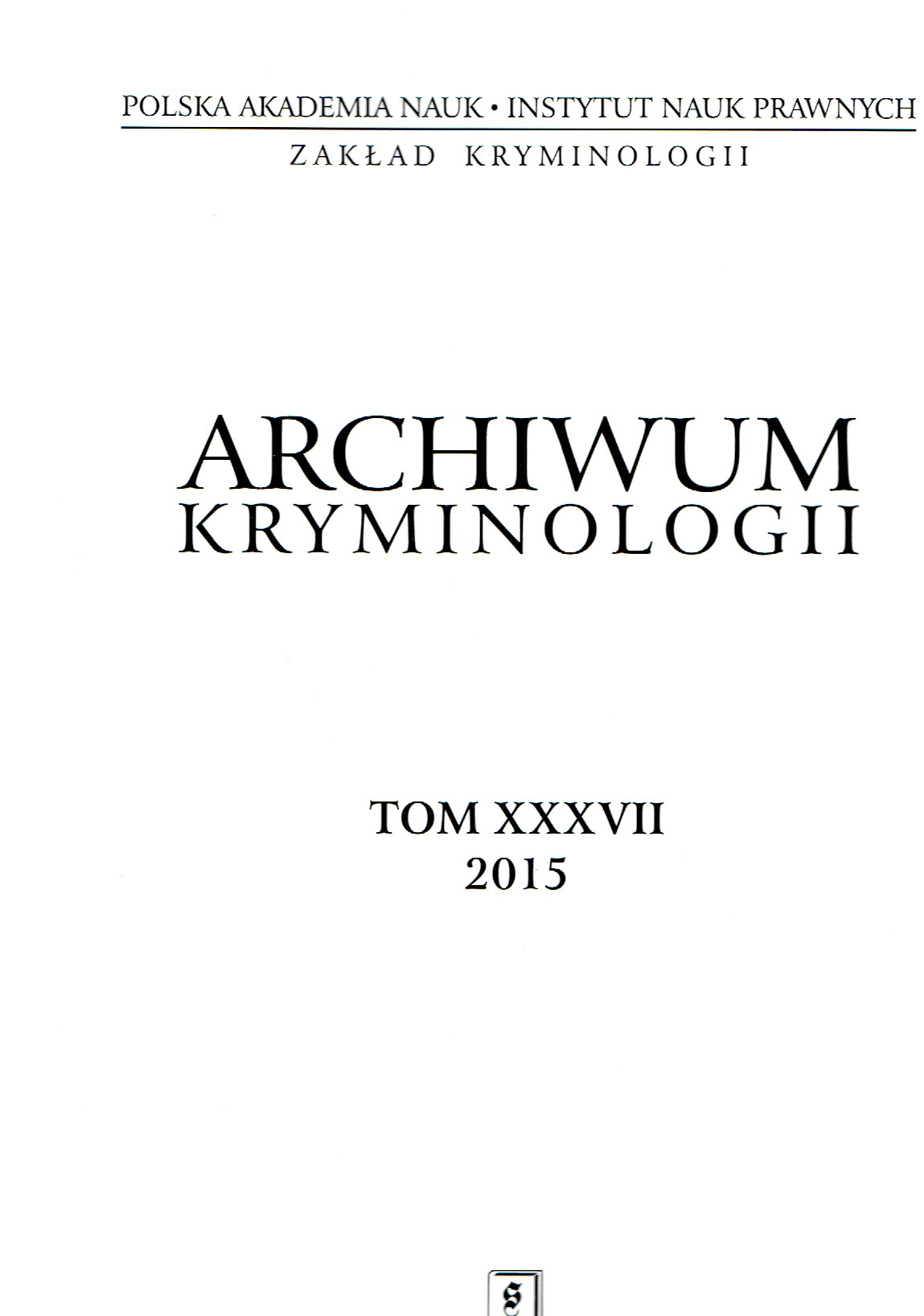KONTROLOWAĆ CZY NIE, ALE JEŚLI KONTROLOWAĆ, TO W JAKI SPOSÓB? WYZWANIA ZWIĄZANE ZE ZJAWISKIEM NOWYCH SUBSTANCJI PSYCHOAKTYWNYCH
To Control or Not, But If So, Then in What Manner? Challenges Associated with the Appearance of New Psychoactive Substances
Author(s): Krzysztof KrajewskiSubject(s): Law, Constitution, Jurisprudence, Criminal Law
Published by: Instytut Nauk Prawnych PAN
Keywords: control; psychoactive substances
Summary/Abstract: Definitions of drug offences must remain in agreement with the principle of nullumcrimen sine lege certa, which demands a precise definition of the subject of thesecrimes, namely illegal psychoactive substances. A basic legislative technique in thisregard is the creation of lists of controlled substances determined by annexes to theappropriate legal acts. Their advantage is precision, but the undoubted disadvantageis low elasticity. In the case of the appearance of a new psychoactive substance, itremains legal until it has been placed onto the appropriate list. This did not have muchsignificance when the market was dominated by well-known substances of natural orpolysynthetic character, and the appearance of new substances was rare. Already inthe 1970s, however, the phenomenon of purely synthetic substances began: so-calleddesigner drugs. They were often primarily created to avoid the existing system ofcontrol: sometimes small changes in the molecular chain of an illegal substance yieldeda new substance of similar psychoactive qualities that did not come under scrutiny.This phenomenon accelerated significantly in the 1990s. The phenomenon of so-callednew psychoactive substances (NPS) became a serious problem, specifically when theybegan to be offered for sale on a wider scale in special shops (so-called smart shops),or on the Internet as a legal equivalent of an illegal narcotic (so-called legal highs). Therace between legislators and chemists “inventing” more and more substances entereda new phase at that time.The answer for legislators in many countries of the world was so-called genericdefinitions, or analogue definitions, under which whole groups of substances cameunder control. However, in many countries these raise constitutional objections, due totheir partially-determined character. This is why the dominant method is still makinglists, which requires the phenomenon of ceaseless revision. Accompanying this isthe problem of evaluating the legitimacy of dispersing controls on new psychotropicsubstances that are provided for illegal narcotics. New psychoactive substances are mostoften poorly understood during the moment when a decision is being made about theirillegalisation: not much is clear about their psychoactive qualities, their potential tocause addiction (dependence potential), their acute toxicity, nor their chronic toxicity.This raises questions about the criteria used for making decisions about illegalisation:are these decisions based in reality on scientific evidence (evidence-based decisions), orare they also taken based on a precautionary principle. In the latter case, banning themis essentially of a political nature and is being done just in case.An example of a formalised procedure of risk assessment linked to new psychoactivesubstances is the European early warning system carried out under the supervision of the European Monitoring Centre for Drugs and Drug Addition (EMCDDA). Therisk evaluation procedure begins with a technical report prepared by EMCDDA andEuropol, who must provide all scientific information on the subject of the givensubstance. A proper evaluation is performed by a broad scientific committee of theEMCDDA. In its report, the committee presents only the facts. On their basis, a finaldecision is taken by the European Commission. If they decide on the control option,member countries are obliged to add the substance to their national lists of controllednarcotics. Since the number of new psychoactive substances appearing in recent years hasrisen dramatically, this system has begun to reach the limits of its efficiency. Due tothis, even during the previous term of the European Parliament, work had begun ona new directive about the issue, the draft of which proposed abandoning the system ofdichotomous treatment of psychoactive substances as either illegal narcotics or as legalsubstances. It is to be replaced with a tripartite separation of psychoactive substancesinto those which present a low risk to health, society and safety (not subject to anylimiting measures), moderate risk (subject to bans on them entering the market, butnot controlled for research, medical or veterinary goals), and high risk (subject tocontrols designed for narcotics).The problem of new psychoactive substances, so-called legal highs, appeared inPoland on a wider scale around 2007-2008. The initial reaction of the legislature wasof a standard character and consisted of extending the lists of controlled substances.This was done in March 2009, June 2010, and April 2011. It was only in October 2010that new control mechanisms were introduced. Due to the concept of substitute drugs,“legal highs” were put under administrative controls differing from the control systemfor intoxicating agents and psychotropic substances. Eventually in July 2015, anotheramendment to legislation on the prevention of drug addiction, on the one hand,extended the list of intoxicating agents and psychotropic substances by another 114substances (consequently, the lists used in Poland now included 428 substances). Onthe other hand, it expanded new forms of control for these substances. Within thisframework, the Ministry of Health introduced a list of new psychoactive substancesin an annex to the regulations, which eases and speeds up the process of addingamendments. Sanctions associated with the illegal turnover of these substances havean administrative rather than criminal character and do not affect normal possession.Despite attempts to find an indirect way, the consequences of Polish politicstowards legal highs are quite paradoxical. Twice after extending the list of controlledsubstances (in June 2010 and July 2015), an increase appeared (a dramatic one in July2015) of poisoning attributed to legal highs. This was certainly a result of the marketreacting to illegalisation. It was due to the replacement of these newly-illegal substanceswith something often markedly more harmful.
Journal: Archiwum Kryminologii
- Issue Year: 2015
- Issue No: XXXVII
- Page Range: 5-50
- Page Count: 46
- Language: Polish

